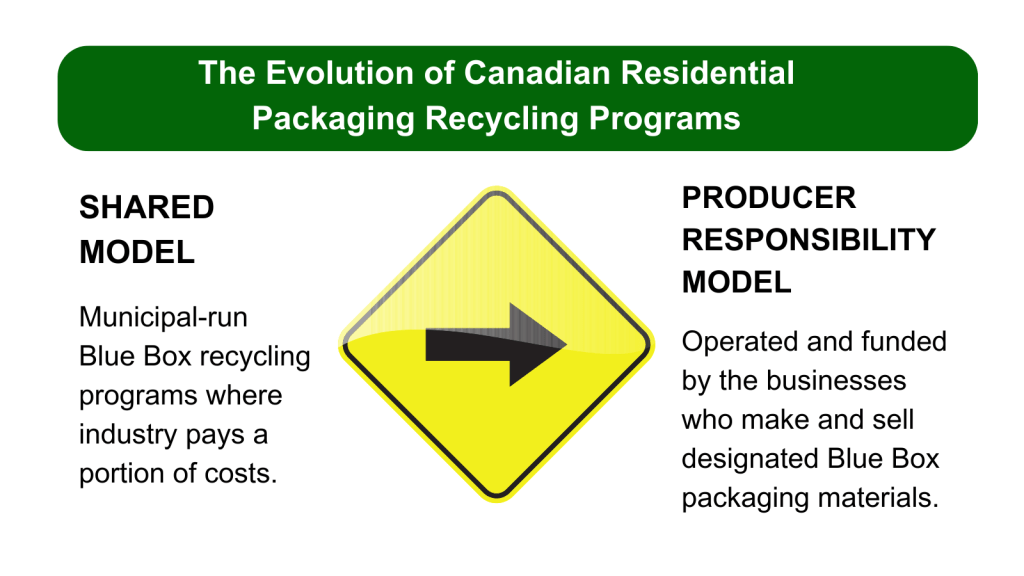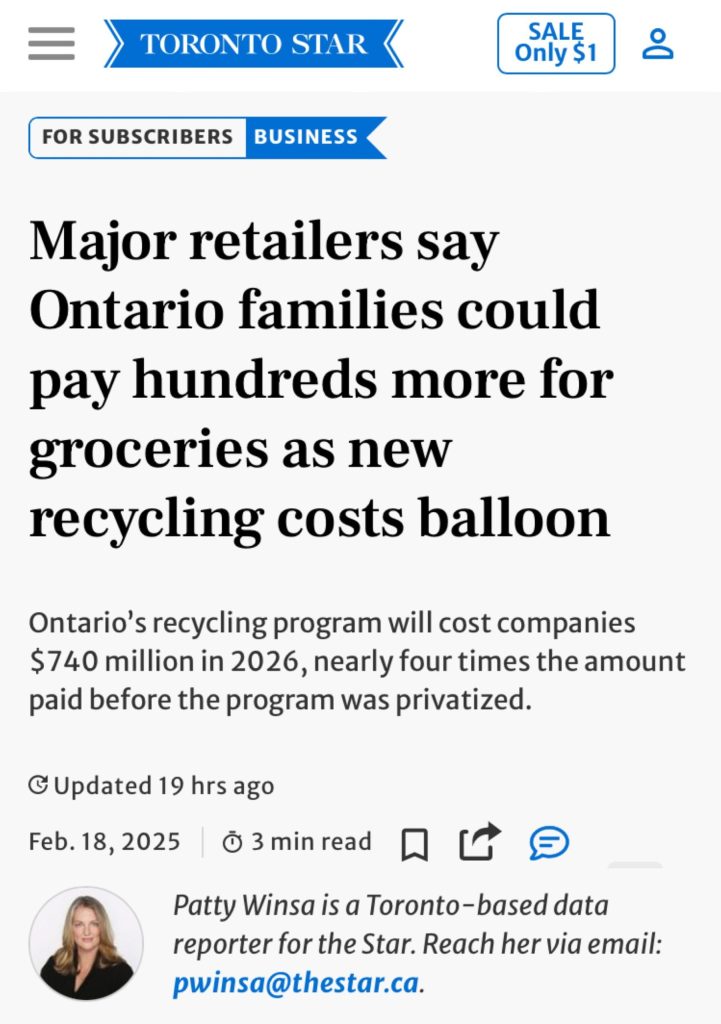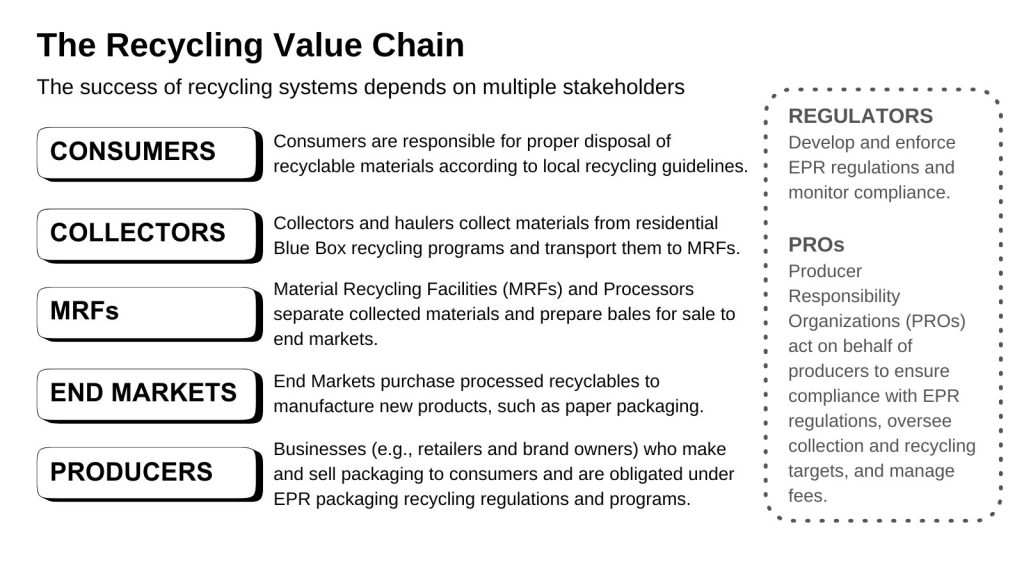Extended Producer Responsibility (EPR) – a policy approach which makes producers financially and physically responsible for managing the recycling of their packaging – is at a pivotal moment in Canada. By the end of this year, most provinces will have adopted full producer responsibility models for residential packaging recycling programs, which represents a major shift in how these programs have historically been delivered.

Ontario is no exception to this transition, with the Blue Box program undergoing significant changes under the province’s Resource Recovery and Circular Economy Act. The new producer responsibility framework allows for a competitive, multi-PRO (producer responsibility organization) model — a PRO being a business established to help producers meet their regulatory obligations. Currently, four Blue Box PROs are registered with the Resource Productivity and Recovery Authority, the regulator mandated to enforce the province’s circular economy laws.
As Ontario transitions to a new model, it’s important to ask: How can we ensure an efficient and effective Ontario Blue Box recycling program?
Ontario Blue Box in the News
A recent article in the Toronto Star, Major retailers say Ontario families could pay hundreds more for groceries as new recycling costs balloon, highlights industry concerns about rising program costs.

The article reports that Retail Council of Canada (RCC) – which represents retailers ie. obligated producers of packaging EPR programs – estimates that the Ontario Blue Box program will cost $740 million to operate in 2026, which is nearly four times the cost under the previous program model (where producers funded 50% of the costs while municipalities operated the program).
RCC estimates it may take another $350 million to expand recycling infrastructure to meet the government’s ambitious recycling targets.
That’s over $1 billion for Ontario alone.
While these figures are estimates and details are limited, the potential costs are undeniably high.
To put that in perspective, producers have contributed a total of just over $1 billion to fund the collection and management of residential packaging in British Columbia since its EPR program first launched in 2014, according to Recycle BC’s 2023 Annual Report.
This isn’t the first time these concerns have surfaced. In April 2024, CBC News published Big grocers, retailers want Ontario’s recycling plan changed, raising similar concerns around costs. Yet, under Ontario’s multi-PRO model, information on fees and program costs is not publicly or readily available, making cost transparency a challenge
Understanding the Recycling Value Chain
While producers are financially and physically responsible under EPR, they are not the only players who determine whether recyclable materials are successfully diverted from landfill.
The residential recycling value chain also includes consumers, collectors and haulers, recycling facilities and processors, and end markets.

Shouldn’t an evolving EPR model consider the roles and responsibilities of all those along the recycling value chain?
Successful recycling programs are dependent on residents putting the right materials in their Blue Box, haulers collecting and transporting materials, and processors delivering quality recycled feedstock to end markets, which include PPEC member companies who buy back used cardboard and paper materials.
PPEC Perspective
For PPEC and its members, who rely on recycled content in their operations, these changes raise important questions, such as:
- How will shifting collection, sorting, and processing methods under EPR impact the quality and availability of recycled materials in Ontario?
- How will EPR ensure consumers actively and properly recycle?
- How will the new model affect access to provincial recycling data?
- Can a new system realistically meet Ontario’s ambitious recycling targets? (PPEC has previously expressed concerns with the paper targets).
We don’t yet have the answers, but we believe that for Ontario’s EPR model to succeed, it must work for everyone — from the obligated producers, to the processors and end markets that close the recycling loop, to the consumers who restart it.
If Ontario’s Blue Box program is to improve under a producer responsibility framework — with more materials recovered and successfully recycled, while achieving lower contamination rates — it will be important to recognize the responsibility of all players along the recycling value chain.
For PPEC and its members – who rely on recycled paper packaging as its primary feedstock – the effectiveness of the entire system matters, especially when paper packaging consistently makes up a large share of Blue Box materials collected and recycled.
Ontario’s Blue Box transition presents an opportunity to improve residential recycling outcomes and reduce waste. But its success will require collaboration, accountability, data-based decisions, and consideration of the full recycling value chain.
